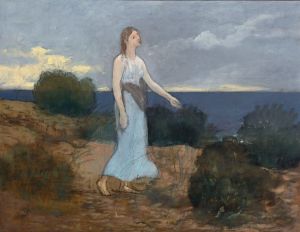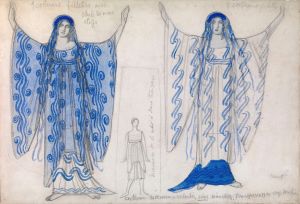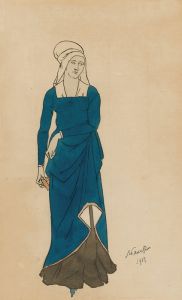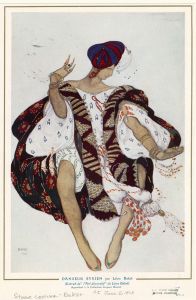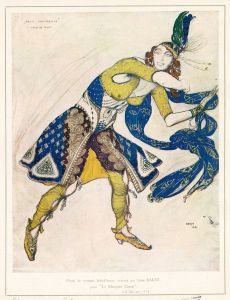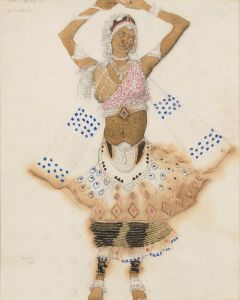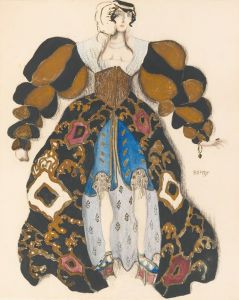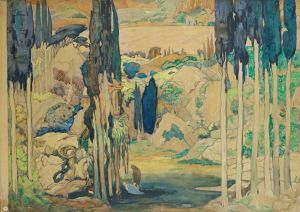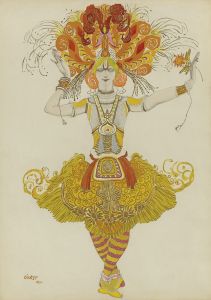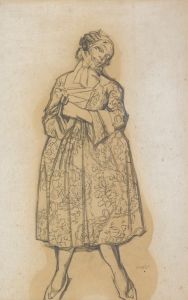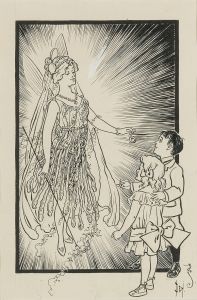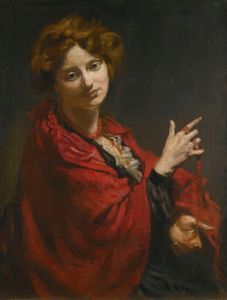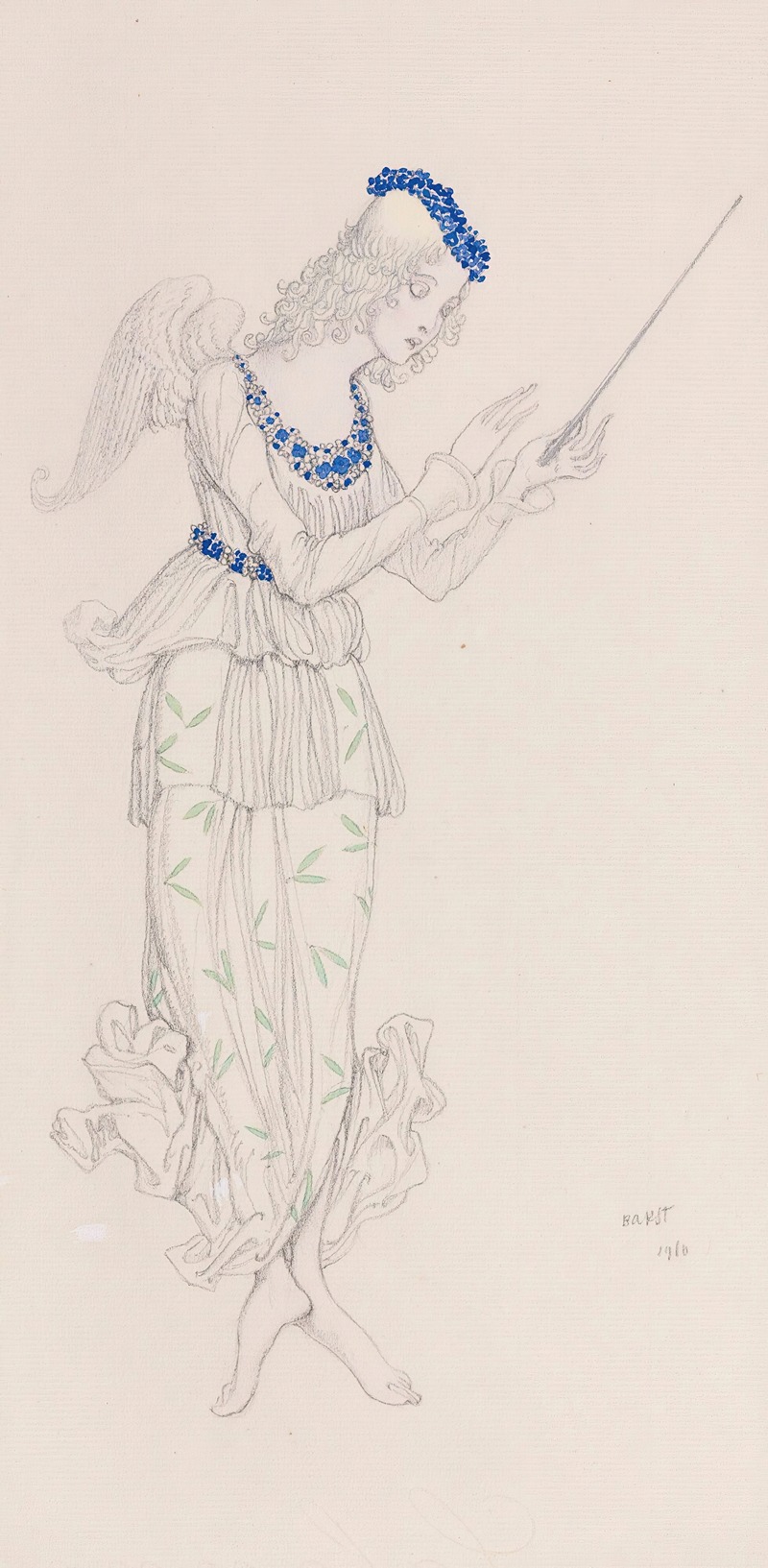
Costume Design For A Fairy From The Ballet The Sleeping Beauty
A hand-painted replica of Léon Bakst’s masterpiece Costume Design For A Fairy From The Ballet The Sleeping Beauty, meticulously crafted by professional artists to capture the true essence of the original. Each piece is created with museum-quality canvas and rare mineral pigments, carefully painted by experienced artists with delicate brushstrokes and rich, layered colors to perfectly recreate the texture of the original artwork. Unlike machine-printed reproductions, this hand-painted version brings the painting to life, infused with the artist’s emotions and skill in every stroke. Whether for personal collection or home decoration, it instantly elevates the artistic atmosphere of any space.
Léon Bakst's "Costume Design for a Fairy from the Ballet The Sleeping Beauty" is a notable example of early 20th-century theatrical design. Created in 1921, this artwork was part of Bakst's contributions to Sergei Diaghilev's Ballets Russes, a groundbreaking ballet company that revolutionized the performing arts through its innovative collaborations between choreographers, composers, and visual artists. Bakst, a Russian painter and stage designer, was one of the most prominent figures associated with the Ballets Russes, known for his vibrant and imaginative costume and set designs.
This particular costume design was created for a production of The Sleeping Beauty, a ballet originally choreographed by Marius Petipa with music by Pyotr Ilyich Tchaikovsky. Diaghilev's version, titled The Sleeping Princess, premiered in London in 1921. It was an adaptation of Petipa's 1890 classic, reimagined for a Western audience. Bakst's designs played a crucial role in this production, as they brought a fresh visual identity to the ballet while maintaining its fairy-tale essence.
The artwork depicts a costume for one of the fairies in the ballet, showcasing Bakst's signature style of intricate detail, bold colors, and a blend of historical and fantastical elements. The design reflects Bakst's ability to merge traditional motifs with modern aesthetics, creating costumes that were both functional for dance and visually striking. His use of rich textures, elaborate patterns, and flowing lines helped to enhance the magical and otherworldly atmosphere of the production.
Bakst's work on The Sleeping Princess was part of a larger trend in the early 20th century that sought to elevate ballet as a total art form, where music, dance, and visual design were equally important. His designs not only influenced the aesthetics of the Ballets Russes but also left a lasting impact on fashion and stage design in the years that followed.
Today, "Costume Design for a Fairy from the Ballet The Sleeping Beauty" is celebrated as an example of Bakst's artistic genius and his contribution to the cultural legacy of the Ballets Russes. The artwork is often studied for its historical significance and its role in shaping modern theatrical design.





